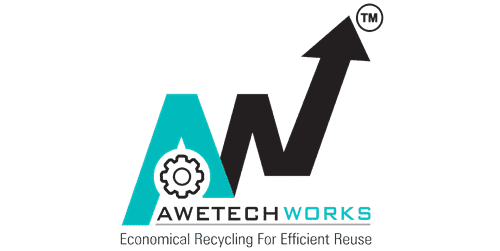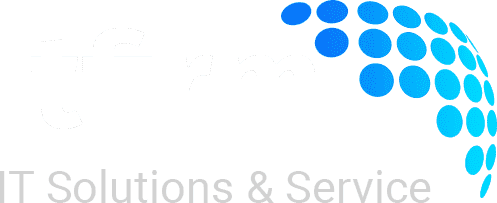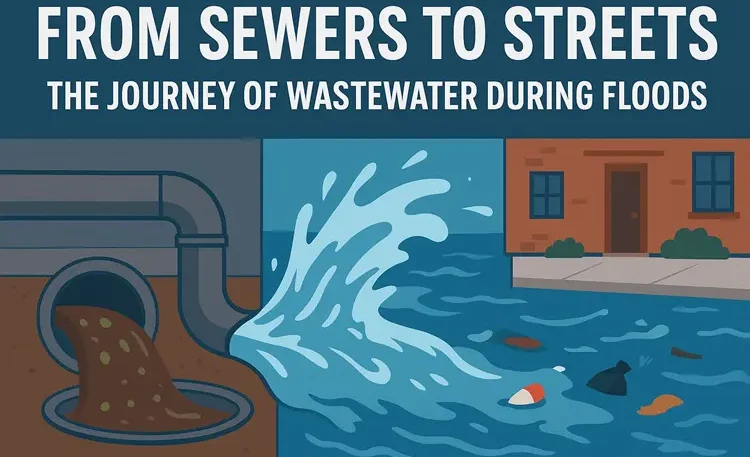Floods are among the most destructive natural disasters that communities face. While heavy rains and overflowing rivers are often seen as the primary cause of flood damage, another danger lurks beneath the surface—wastewater mixing with stormwater and pouring out onto streets, homes, and natural water bodies. This article explores how floodwaters turn into hazardous wastewater, what it contains, why sewer overflows happen, and how communities can build resilience to minimize risks.
The Dual Water Systems That Keep Cities Running
Urban areas rely on intricate water management systems that handle both stormwater runoff and wastewater. Stormwater is the rainwater that flows off streets, roofs, and drains. Wastewater, on the other hand, comes from household and industrial sources such as toilets, sinks, factories, and laundries. These two types of water are typically directed underground through pipes toward treatment facilities where pollutants are removed before being discharged safely into rivers or reused.
In many cities, especially older ones, stormwater and sewage are transported through a combined sewer system. Under normal conditions, this setup is sufficient because treatment plants can process the water volume entering the system. However, during a flood, the situation quickly spirals out of control.
How Floodwaters Become Wastewater
When intense storms occur, large volumes of rainwater surge into the combined sewer system. These pipes, originally designed for typical rainfall patterns, become overwhelmed as the excess water infiltrates through cracks, overflows through inlets, or backs up from clogged drains. Once capacity is exceeded, untreated wastewater—including human waste and industrial pollutants—escapes from the sewer network and floods public spaces.
Floodwater mixed with sewage follows gravity, flowing into streets, homes, basements, and natural water bodies such as rivers and lakes. The overflow may spread across neighborhoods, carrying not only pollutants but also pathogens that pose severe health risks. The sight of sewage-filled streets is both a health hazard and a visual reminder of how vulnerable urban infrastructure can be.
What’s in Floodwater? A Toxic Cocktail
Floodwaters laced with wastewater are far more dangerous than clean rainwater. Below are some of the common components found in flood-contaminated water:
1. Human Waste
The largest and most dangerous portion of wastewater comes from human excrement. It contains:
- Bacteria such as E. coli and Salmonella
- Viruses including hepatitis A and norovirus
- Parasites that cause diseases like giardiasis
These contaminants can trigger gastrointestinal illnesses, skin infections, and respiratory problems.
2. Household Chemicals
As floodwater surges into homes, it collects a variety of chemicals from everyday products:
- Soaps, detergents, and bleaches
- Paints and solvents
- Cleaning agents and disinfectants
These substances are harmful to both human health and aquatic ecosystems.
3. Industrial Pollutants
In cities with industrial activity, floodwater can pick up pollutants from factories, workshops, and transportation hubs:
- Heavy metals such as lead, mercury, and cadmium
- Oils and petroleum by-products
- Chemical solvents and other hazardous waste
These pollutants can persist in the environment for long periods, poisoning soil and water.
4. Solid Debris
Floodwaters often sweep along:
- Plastic waste
- Garbage and food scraps
- Construction debris like bricks and concrete
These materials block drainage systems, further exacerbating the flooding problem.
Health Hazards of Wastewater in Floods
Exposure to floodwater containing untreated sewage and pollutants can have dire health consequences. Some of the common risks include:
Waterborne Diseases
Floodwater is a breeding ground for diseases such as:
- Cholera: Caused by bacteria that thrive in contaminated water.
- Hepatitis A: A viral infection affecting the liver.
- Typhoid fever: Bacterial infection linked to poor sanitation.
- Leptospirosis: Caused by bacteria from infected animals carried by floodwater.
Skin Irritations and Infections
Prolonged exposure can cause:
- Rashes
- Sores
- Dermatitis
- Fungal infections
Gastrointestinal Disorders
Ingesting contaminated water can lead to:
- Diarrhea
- Vomiting
- Dehydration
- Severe intestinal distress
Long-Term Effects
Persistent exposure may result in chronic health issues and developmental problems in vulnerable populations like children and the elderly.
Why Do Sewer Overflows Occur During Floods?
Understanding the underlying reasons for sewer overflows is critical in preventing and mitigating the risks. Below are the most common causes:
1. Aging Infrastructure
Many cities operate on sewer networks built decades ago. Pipes may be cracked, rusted, or poorly maintained, allowing floodwaters to seep in and overwhelm the system.
2. Combined Sewer Systems
While cost-effective, combined systems that transport both stormwater and wastewater are prone to overflows during heavy rains. The excess volume surpasses the treatment plant’s capacity, resulting in untreated discharges.
3. Insufficient Pumping Capacity
Pumps at treatment plants may struggle to handle sudden surges in water flow. Power outages during storms can further reduce their efficiency.
4. Blocked Drains
Debris like plastic bags, leaves, and waste materials often clog storm inlets, preventing water from draining properly. This forces water to back up and overflow.
Ripple Effects of Sewer Overflows
The consequences of wastewater mixing with floodwater extend far beyond the initial flooding. Below are the broader impacts:
1. Public Health Crises
Once untreated wastewater enters living spaces or natural water bodies, disease outbreaks become a real threat. Emergency rooms see spikes in infections, while local clinics may lack the resources to respond.
2. Environmental Damage
Floodwaters carrying sewage contaminate rivers, lakes, and wetlands. The delicate ecosystems that support fish, birds, and plant life are severely affected, with long-term consequences on biodiversity.
3. Economic Strain
Flood-related sewer overflows lead to:
- High clean-up costs
- Infrastructure repairs
- Increased healthcare expenses
- Lost productivity due to illness
The economic burden often falls hardest on lower-income communities.
4. Loss of Public Trust
Once water supplies are deemed unsafe, restoring community confidence becomes a challenge. People may avoid tap water, rely on expensive bottled alternatives, or demand costly infrastructure overhauls.
Building Resilience: Steps Toward Safer Cities
Addressing sewer overflows requires both long-term investments and immediate community action. Below are strategies that cities and individuals can adopt to reduce the risks associated with floodwaters:
1. Separate Stormwater and Wastewater Systems
Whenever possible, cities should upgrade infrastructure to separate stormwater from sewage lines. This reduces the likelihood of overflows during heavy rains.
2. Implement Green Infrastructure
Natural solutions can absorb excess rainwater before it enters sewer systems:
- Rain gardens that capture and filter runoff
- Permeable pavements that allow water to seep into the ground
- Wetlands and retention ponds that store water and reduce flow rates
These approaches not only manage water but also improve air quality and urban aesthetics.
3. Install Backflow Preventers
Homeowners can protect their properties by installing devices that prevent sewage from flowing back through drains and into basements and living spaces.
4. Maintain Drains and Storm Inlets
Regular cleaning of drains ensures that debris doesn’t block water flow during storms. Municipal bodies must prioritize maintenance, and residents can participate by keeping neighborhood drains clear.
5. Develop Emergency Preparedness Plans
Floodwater management should be a critical part of city emergency planning. Action steps include:
- Pre-storm warnings about flood risks
- Evacuation protocols
- Distribution of water purification kits
- Medical support and public health campaigns
The Role of Communities and Individuals
While governments play a crucial role, community participation is equally essential. Residents can:
- Avoid dumping waste into storm drains
- Report clogged drains promptly
- Use eco-friendly household products
- Support initiatives for infrastructure upgrades
- Participate in disaster preparedness training
Education is a key factor in building resilient communities. Awareness campaigns can help people understand how floodwater becomes dangerous and what precautions they can take to protect themselves and others.
Looking Ahead: Climate Change and Growing Risks
As climate change intensifies weather patterns, urban flooding is expected to become more frequent and severe. Sea-level rise, heavier rainfall, and unpredictable storms increase the pressure on already strained sewer systems. Without proactive planning, wastewater-related disasters will escalate, endangering both human health and environmental sustainability.
Investments in infrastructure modernization, early warning systems, and community engagement will be critical in addressing these challenges. Cities that adapt quickly, learn from past floods, and implement integrated water management strategies will be better positioned to protect their residents and ecosystems.
Conclusion
The journey of wastewater during floods is a hidden but significant threat that accompanies heavy rains and overflowing rivers. What begins as stormwater runoff quickly transforms into toxic, contaminated wastewater that spreads across streets, homes, and natural waterways, carrying with it pathogens, chemicals, and debris. Sewer overflows are often the result of aging infrastructure, combined sewer systems, blocked drains, and insufficient treatment capacity.
The health, environmental, and economic consequences are far-reaching, but they are not insurmountable. By investing in separate water systems, green infrastructure, home protection measures, and emergency preparedness, cities and communities can mitigate the risks and build resilience against future floods. As climate change continues to challenge urban planning, sustainable and inclusive solutions are the key to safeguarding lives, livelihoods, and ecosystems.
This interconnected approach—combining science, infrastructure, governance, and community action—is the way forward in transforming floodwater from a source of danger into an opportunity for smarter, safer living.






